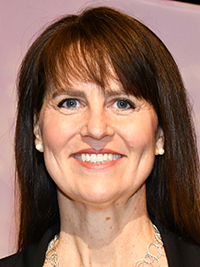Hospital executives urge colleagues to comment on upcoming transparency rules
Hospital and health plan executives were urged by finance leaders to plan to comment on coming federal department rules implementing this week’s White House executive order on healthcare transparency.
On Monday, President Donald Trump issued an executive order requiring several federal departments to issue rules on transparency, including requiring hospitals to publicly disclose “charges and information based on negotiated rates” in an easy-to-read format. The U.S. Department of Health and Human Services (HHS) was given two months to issue a proposed rule implementing the hospital-charge and rate-disclosure requirements.
On Tuesday, revenue cycle leaders urged provider and health plan leaders to provide their insights through the formal public comment process — when the proposed rules are issued.
“It’s incumbent, upon us as leaders, especially during the comment period that’s going to come out, that we’re engaged so we can ensure that we make this meaningful,” said Margaret Schuler, system vice president of revenue cycle for OhioHeath.

Schuler cited requirements that hospitals begin posting their chargemasters online in January 2019 as an example of a federal transparency policy “that was not meaningful.”
“We really need to lean in to helping the government understand the complexities of price transparency and then how we can really make it meaningful for our consumers,” Schuler said.
Terrie Handy, vice president of revenue cycle for Legacy Health System, urged both provider and payer organizations to comment on the proposed rules on charges or rates when they are released.
Barbara Tapscott, vice president of revenue management for Geisinger Health, raised concerns that providers may not be the best source for the transparency data sought by consumers.
“Insurance companies are better positioned in my opinion to provide additional information to their members,” Tapscott said. “One would expect that this can be a good change if everyone is at the table.”
Earlier transparency efforts
Joe Fifer, president and CEO of HFMA, noted that the association has long advocated for informing patients upfront about their out-of-pocket costs for care, including leading a 2014 industry consensus on price transparency guidelines.
“Frankly, we’ve been leading in this area for more than 10 years,” Fifer said.
Fifer urged healthcare finance leaders to personally walk through their organization’s revenue cycle processes. “It sometimes points to those things we wouldn’t like if we were a patient,” Fifer said.
Health system’s efforts on transparency in recent years included Geisinger’s offer of pre-service estimates through its patient web portal. Since launching it, Geisinger has learned that patients want more specific estimates than the provided generic estimates, which did not consider care variations. However, the system is examining ways to adjust its estimates for patients whose care was changed from what was initially estimated.
After acquiring facilities with grandfathered health plan contracts, with which the health system was not experienced, Geisinger has found its estimates for some of those patients were highly inaccurate.
“On a case-by-case basis, we are honoring and putting our word and our mission in front of that patient and honoring our estimate,” Tapscott said.
One challenge Geisinger has had with its transparency tool is low-use rates by its patients, which may stem in part from more people using health-plan-shopping websites. In contrast, on the Geisinger portal, like many provider portals, patients also would have access to quality data on providers they are comparing.





